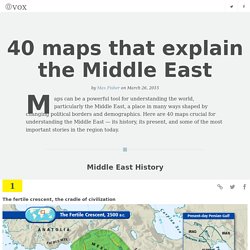

World War I in Photos. Timeline of metal processes, heat treatments, surface technology - Bodycote. Puabi (commonly labelled Queen Puabi) was an important person in the Sumerian city of Ur, during the First Dynasty of Ur.

A gold goblet with a double-walled vessel made for her was found in her tomb. Brazed with an alloy of 25% silver, the gold was called ‘electrum’. Gold brazing was known and skilfully practiced by the Sumerians, the first civilisation in the history of man in the 3rd century BC. The goblet, created for Puabi, was found still filled with green eye paint in the Cemetery of Ur (in modern day Iraq) by Sir Leonard Woolley between 1922 and 1934, and is one of the earliest surviving examples of a brazed joint.
The upper portion is double-walled and the brazed joint is made around the periphery. Other examples of early brazing include drinking vessels with handles attached to the body using a brazing technique originating in Troy around 2200 BC. Brazing on a larger scale is undertaken in furnaces. World War One. EyeWitness to History - history through the eyes of those who lived it. Maps of War. 40 Maps That Explain The Middle East.
Maps can be a powerful tool for understanding the world, particularly the Middle East, a place in many ways shaped by changing political borders and demographics.

Here are 40 maps crucial for understanding the Middle East — its history, its present, and some of the most important stories in the region today. Middle East History The fertile crescent, the cradle of civilization The fertile crescent, the cradle of civilizationIf this area wasn't the birthplace of human civilization, it was at least a birthplace of human civilization. Called "the fertile crescent" because of its lush soil, the "crescent" of land mostly includes modern-day Iraq, Syria, Jordan, and Israel-Palestine.
(Some definitions also include the Nile River valley in Egypt.) The Middle East today The dialects of Arabic today The dialects of Arabic todayThis map shows the vast extent of the Arabic-speaking world and the linguistic diversity within it. Israel-Palestine Syria Iran Afghanistan Saudi Arabia and Oil. Timeline Of Historical Periods. History: World Wars in-depth. History of Europe since 1945 : Europe from one century to another 1990-2005. History of Europe between the Two World Wars 1918-1942 : Europe after World War I. History of Europe in the 19th century : The Congress of Vienna 1814-1815 (The map as History) 14 Exceptional Weapon Designs From History You Should Know About. The scope of ‘hi-tech’ designs is not just limited to our modern affairs.

As it turns out, history has had its fair share of brilliant (and sometimes bizarre) weapon conceptions that were arguably ‘advanced’ in every sense of the word. So, without further ado, let us take a gander at fourteen such advanced weapon systems from history that were surely far ahead of their time. *Please note – By ‘designs’ we have also taken into account the conceptual designs that were conceived by military engineers throughout history. 1) Gastraphetes (probably invented in late 5th century BC) – Literally translated to “belly-releaser”, the Gastraphetes was an ancient handheld crossbow-like mechanism described and drawn in a detailed manner in Heron of Alexandria’s compiled Belopoeica. As for its historical context, the Gastraphetes was possibly invented between the period of 421 BC to 401 BC, by Zopyros – a Pythagorean engineer from Southern Italy. 2) Chu-Ko-Nu (probably invented in 4th century BC) –